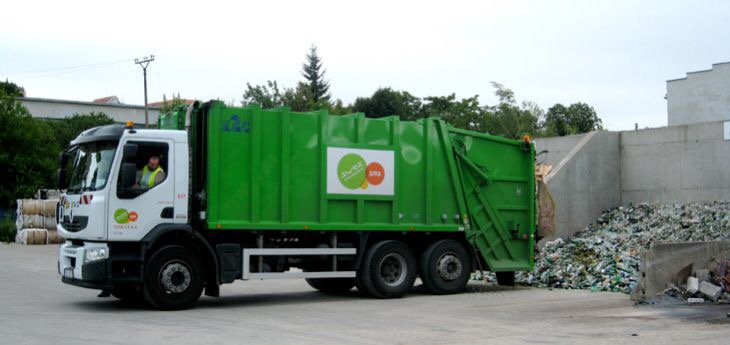SUEZ analysis of government figures reveals that the East of England’s household recycling rate has fallen for the financial year to end March 2016, declining to 49.2%, a fall of 0.1%, down from 49.3% in the prior year 2014/15.
The East of England’s recycling performance is part of a wider trend across England where the 2015/16 recycling rates fell nationally for the first time in 16 years, according to SUEZ analysis of government data for financial year ends. England’s recycling rate for 2015/16 was 43.9% a fall of 0.8% from 44.7% in 2014/15, and down from the 44.5% in 2013/14.
Every region in England during 2015/16 experienced a decline in annual household recycling rates, other than the South West which stagnated at 47.6%. Whilst the drop may only seem small, the society should be pushing recycling figures up, year after year, as we are becoming even more aware of why this is so important. Everyone should be contributing. Companies are out there that are helping businesses recycle and manage waste in a more effective and efficient manner. For example, using cardboard balers can really help save space.
Despite the fall, the East of England region ranked first out of nine English regions as demarcated by DEFRA for the eighth year running, ahead of North East, North West, Yorkshire and the Humber, East Midlands, West Midlands, South East, and South West and London
Rochford District Council retains the highest household recycling rate in the East of England at 66.0%, a 0.8 percentage point increase compared to the same period in 2014/15. Tendring District Council has the lowest household recycling rate out of all local authorities in the East of England, at 26.2% in 2015/16, down from 26.3% in 2014/15.
David Palmer-Jones, CEO for SUEZ recycling and recovery in the UK, said:
“Recycling rates in the East of England have fallen to 49.2% in the financial year to end March 2016, down 0.1% from 49.3% from the year before, according to SUEZ analysis of official data.
.
The England waste from households figures make a significant contribution to the UK and within England, SUEZ’s analysis reveals that the sharpest regional declines come from now the most populous areas nationwide including London and the West and East Midlands. The South West was the only English region which saw no falls with annual recycling rates flat-lining in 2015/16 at 47.6%.
Household recycling rates fell sharply on average across England’s local authorities down 0.8% in the 12 month period to end March 2016, down year-on-year to 43.9% from 44.7% for the 12 months to March 2015, and compared to the 44.5% rate achieved for the prior financial year to end of March 2014 according to SUEZ analysis of Defra statistics. The annual fall is the first since modern records began for the annual financial year period going back to 2000/2001.
The introduction of more charging by local authorities for green collections – largely garden waste – may be deterring many households from putting their cuttings out for collection and recycling rates are still measured largely by weight of materials collected with green waste tending to be wetter and heavier rather than measuring the quality and reuse value of recyclable materials collected.
Separate latest annual household recycling figures for the whole of the UK give a picture for the earlier 12 month period, the calendar year to the end of December and recycling rates for the whole of the UK fell for the first time in five years of such data recording. The UK’s annual rate of recycling for calendar year to end December 2015 was down 0.6% to 44.3% from 44.9% in 2014.
The UK is at a tipping point and without radical change to improve England’s household recycling rates the UK will not meet its EU agreed target of 50% recycling rates by 2020. Wales has shown England that it is possible to come closer to that target thanks to a clear national policy of enforceable local targets with Wales achieving over 60.2% over the financial year to end-March 2016, up a strong 4% over the prior 12 month period of 2014/2015. Wales’ recycling rates continue to improve, achieving 61% for the 12 months to end-June 2016 according to analysis of official data.
SUEZ recommends the introduction of a wider producer responsibility regime in England, also known as ‘polluter pays’ which would see packaging makers or manufacturers taxed in a sliding scale according to the amount of recyclable and non-recyclable materials used and that cost added to the cost of the product. The tax would help pay for better household collection of recyclables and help address the huge funding challenge that local government faces.
To drive significant behavioural change in England national policy makers need to apply direction from top down to encourage households to put more of their
recyclables into the right recycling containers and not left in black bags meant for non-recyclable refuse, and from bottom up to encourage producers of materials to use more recyclable material.
The principle of EPR is that producers of the consumer products we buy are made responsible for their management after they are discarded as waste. With recycling targets to meet, that means producers have a hand in designing collection systems appropriate for receiving back the materials they are responsible for. Producers must also fund these systems, which include options such as separate doorstep collection, deposit-return schemes, and reverse vending systems.
Producer responsibility would affect real change by shifting some of the responsibility of household recycling away from beleaguered householders and back to businesses. It would not only allow waste management costs for obligated products to transfer from the public purse to the point of sale, but properly designed, producer responsibility should be a win-win proposition for producers and waste operators. Producers retain the value in their products, while the waste management sector can operate to a clear set of quality standards, with opportunities for growth in value creation.”




